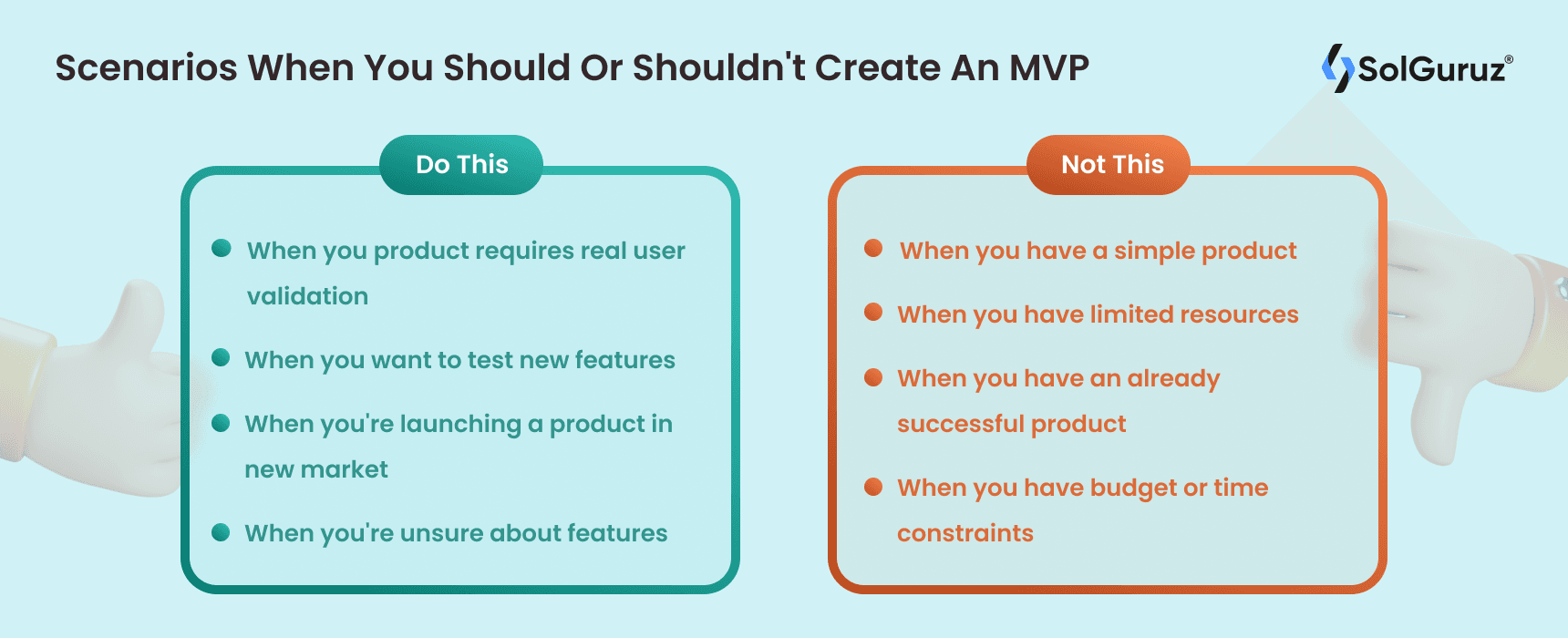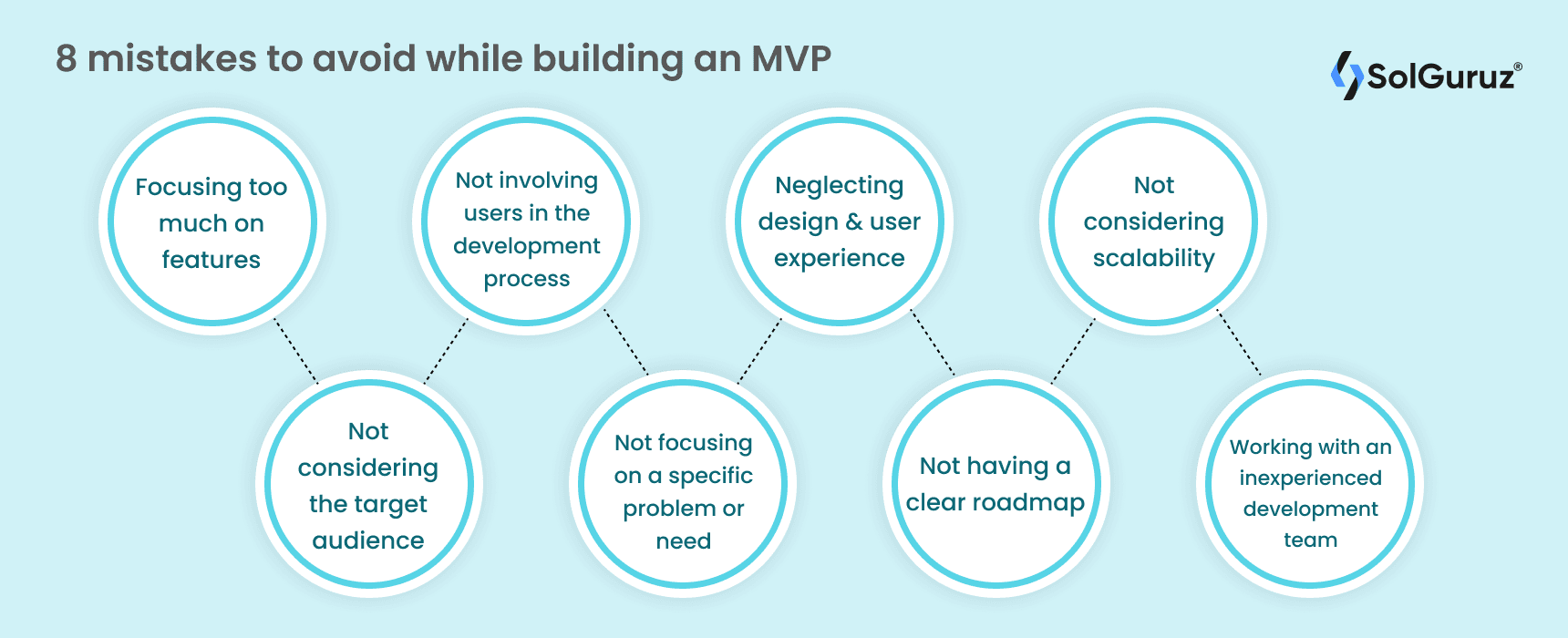Engineering Quality Solutions
Unlock the potential of your startup with our guide on the latest trends and techniques for creating a successful Minimum Viable Product in 2025.

In today’s fast-paced and competitive business landscape, getting your product to market quickly is more important than ever. However, knowing where to begin with so many available options and features can take time and effort.
According to an article from the Codest, nearly 40% of startups fail because they need to validate their product ideas before launching (lack of market need). This is where Minimum Viable Product (MVP) development comes in.
MVP development allows you to validate your product idea and gather valuable feedback before committing to a full-scale launch by focusing on the core features and functionality that your customers truly need.
In this blog, we’ll explore building a successful minimum viable product in 2025.
Table of Contents

An MVP, or Minimum Viable Product, is a minimal yet functional version of a product that is released to a select group of customers or users. It helps test the viability of the product’s concept and gather feedback on its features, creating a web design and an overall user experience. This way, you can validate the market and product-market fit before fully committing to building the final product.
Here’s an example that explains how MVP works:
Let’s assume a startup company wants to launch a new social media platform for photographers. Instead of spending a lot of time and resources building a fully-featured platform with all the bells and whistles, the company decides to launch a minimum viable product first.
This MVP version would have basic functionality, such as the ability for users to upload and share photos and a simple profile setup. The company would then gather feedback from early adopters and make improvements before releasing a more full-featured platform version.
This approach allows the company to test the market and gather valuable user insights without a large investment of time and resources.

Creating an MVP is a way to test the viability of a product idea with a small, targeted group of users. By launching an MVP, businesses can:

MVP is a great way to validate your product idea and gather feedback from your target market, but it’s not always the best approach. You should consider factors such as the complexity of the product, the availability of resources, and the level of uncertainty about the product-market fit before creating an MVP.

Creating a Minimum Viable Product (MVP) involves several key steps, including:
Remember that MVP development is an iterative process, and the MVP Development steps may not always be linear. It’s important to remain flexible and open to feedback throughout the process and be prepared to make adjustments as necessary.
The cost of creating a minimum viable product in 2025 can range from $20,000 to $150,000 or more. The necessary resources and effort to develop an MVP depend on its complexity and scope.
We can break down the cost of creating an MVP into several main categories:
It’s important to note that the cost of creating an MVP can vary depending on the development platform and tools used, such as whether you decide to build it in-house or outsource it.
Developing an Minimum Viable Product in-house can be more expensive than outsourcing it to an MVP development company. Another advantage of outsourcing to an MVP development agency is that it’ll take full responsibility for everything from designing the product from scratch to developing the final product.
It’s crucial to consider the expenses associated with keeping the MVP updated and functional, as well as the cost of expanding it into a fully developed product.
| MVP (Minimum Viable Product) | POC (Proof of Concept) |
| A product with enough features to satisfy early customers and provide feedback for future development | A prototype or simulation that demonstrates the feasibility of a concept or idea |
| Focuses on testing the market and customer demand | Focuses on testing the technical feasibility of an idea |
| Has a functional user interface | It may not have a functional user interface |
| Aims to validate the business model | Aims to validate the technical concept |
| Built with a goal of getting to market quickly | Built with the goal of testing and evaluating the concept |
Building an MVP can be a complex process, and there are several everyday things businesses need to correct that can lead to delays and increased costs. Here are some development mistakes to avoid while building an MVP:

SolGuruz is an award-winning app development company specializing in helping businesses develop Minimum Viable Products (MVPs). They have a team of experienced developers, designers, and project managers who work closely with clients to understand their needs and develop tailored MVPs to meet those needs.
One of the key strengths of SolGuruz is its ability to understand and analyze the market and the target audience, which helps it identify the core features and functionality essential for the MVP. They prioritize user experience and design in order to create an MVP that is user-friendly and tailored to the target audience’s needs.
SolGuruz also strongly emphasizes quality assurance to ensure that the MVP is thoroughly tested and validated before it is launched to the public. They also offer ongoing support and maintenance services to help ensure that the MVP is updated and expanded as needed.
In addition to its technical expertise, SolGuruz is known for its strong project management skills and ability to communicate clearly with clients throughout the development process. This leads to the timely and cost-effective completion of the project.
In conclusion, building a Minimum Viable Product (MVP) in 2025 requires a clear understanding of the problem or need that the MVP is solving, a deep understanding of the target market, and a focus on the core features and functionality that are essential for the MVP.
It’s essential to involve users in the development process and to thoroughly test and validate the MVP before launching it to the public. With the right approach and team, you can build an MVP that is not only functional but also visually appealing, user-friendly, and exceeds your target market’s expectations.
Building an MVP can be challenging, but with the right approach and mobile app development team, it can be a valuable investment that can help you validate your product idea and bring it to market quickly and efficiently.
The time it takes to build a Minimum Viable Product (MVP) in 2025 can vary greatly depending on the complexity of the product and the resources required to develop it. An experienced MVP development company can take anywhere from 3 to 4 months to build an MVP.
Launching an MVP involves several key steps, including testing and validating the MVP with a small group of users, gathering feedback, making any necessary adjustments, and then launching the MVP to the public. It’s important to have a clear launch plan outlining the key milestones, target audience, and messaging.
It is possible to build a minimum viable product (MVP) without writing any code, using no-code platforms or tools that allow for the development of an MVP without the need for coding. You can use Landing page builders like Unbounce and Leadpages, prototyping tools such as InVision, Figma, and Axure. Lastly, third-party APIs and services, such as Zapier, IFTTT, and Airtable, connect different apps and automate workflows without writing code.
An MVP must have three critical characteristics to be successful: it must solve a specific problem, be tailored to meet the needs of the target market, and undergo validation with a select group of users before being released to the public. By focusing on solving a specific issue and being designed for the target audience, an MVP can be effective and user-friendly, and testing it with a select group before a full launch helps to ensure its viability.
One of the best-known examples of a minimum viable product (MVP) is the launch of the first version of Dropbox. Drew Houston, the co-founder, created a simple video that showed how the service would work and shared it with a few friends. On a few online forums, he received overwhelming positive feedback and launched the MVP, a simple file-sharing service that allowed users to upload and share files.
Written by
Paresh is a Co-Founder and CEO at SolGuruz, who has been exploring the software industry's horizon for over 15 years. With extensive experience in mobile, Web and Backend technologies, he has excelled in working closely with startups and enterprises. His expertise in understanding tech has helped businesses achieve excellence over the long run. He believes in giving back to the society, and with that he has founded a community chapter called "Google Developers Group Ahmedabad", he has organised 100+ events and have delivered 150+ tech talks across the world, he has been recognized as one of the top 10 highest reputation points holders for the Android tag on Stack Overflow. At SolGuruz, we believe in delivering a combination of technology and management. Our commitment to quality engineering is unwavering, and we never want to waste your time or ours. So when you work with us, you can rest assured that we will deliver on our promises, no matter what.
SolGuruz helps you reach your goals with custom tech solutions.

1 Week Risk-Free Trial

Strict NDA

Flexible Engagement Models
Give us a call now!

+1 (724) 577-7737
Discover the latest tech trends from SolGuruz - empowering businesses with innovative solutions and transformative insights!